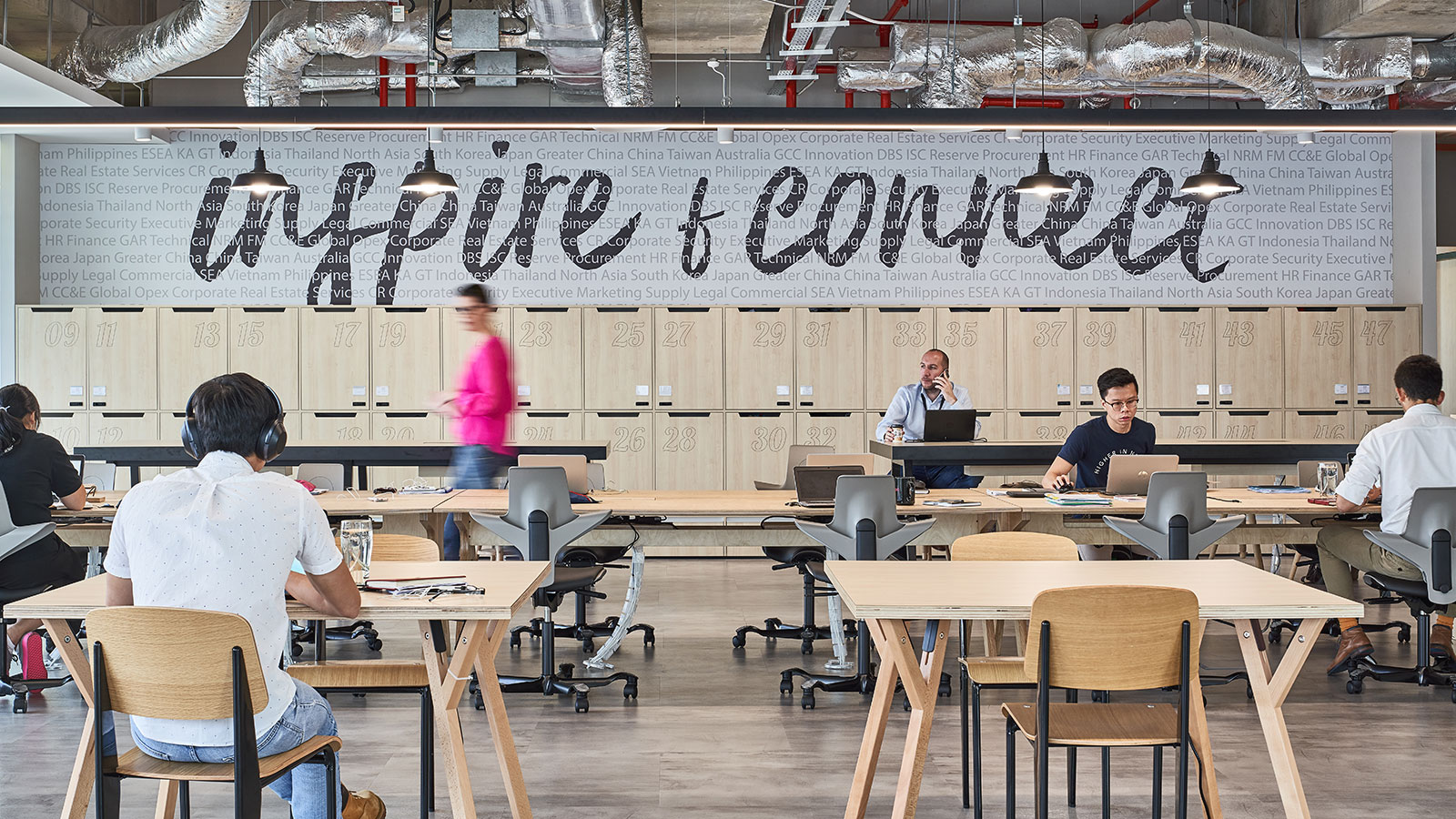
It's time to kill the "six feet office" - Superlab
Swedish workplace researchers Superlab share with us their vision for what has to happen next for the office to flourish
- Design
- Collaborations
- Advice & Guidance
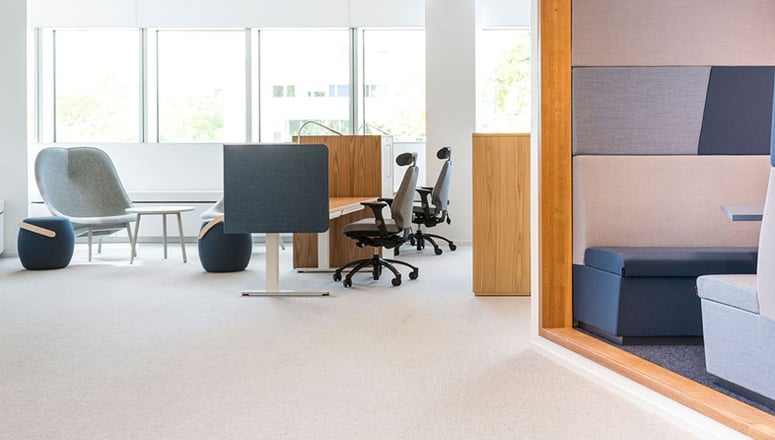
We know that offices have been forced to carry through multiple and quite hardcore adjustments in the course of the pandemic. As the vaccine is being rolled out worldwide, companies face another challenging chapter of this thoroughgoing paradigm shift; how to lure back their employees to the office and keep them in the organization. In order to succeed in this endeavor, we believe companies need to question their view on work, thoroughly redefine their culture and office space to create the best possible employee experience.
Your best employees might leave you
“Do we still need our physical office?”. This question is in the air more than ever these days. The answer is yes, you do. But your company will also need to make adjustments in the wake of Corona to survive in the new work market. And it’s not about offering hand sanitizer everywhere, keeping desks six feet apart, or making new regulation signs to put up in every room. Rather, your focus and strategy should be around keeping your employees and alluring new, young talent to your organization.
According to Microsoft’s latest Work Trend Index report, 41% of employees are considering leaving their current employer in 2021. The study encompasses 30,000 full-time employed workers across 31 markets, making the numbers a strong indicator that people are less attached to their position than before.
When Corona hit, most employees were shaken by the uncertainties. Worries about whether they would lose their job, if they could do their work from home, what would happen if they or someone close to them got sick became part of their everyday life. Most employers were not prepared for this. Without any experience in how to create a digital work culture successfully from one day to another, they were largely unable to support their employees in a way that made them feel safe and able to do their job properly. In many cases, employees had to learn to tackle the situation themselves. And eventually, they did.
Every working generation had to learn how to use the digital tools needed for remote work, a skill that provides employees with freedom and confidence. They also had to discover which ways to work independently fitted them best. Many got used to taking walks before lunch, not having to stress the kids in the morning, and doing effective work outside regular office hours. One year after the outbreak, employees are now starting to see the possibilities provided by their new skills and confidence opening up. Many even feel tempted to adopt a new lifestyle with remote work as status quo. Almost half of the respondents of Microsoft’s report, 46% to be exact, say that they are likely to move to another city or country when the pandemic is over. This poses a risk to those companies that do not offer the possibility for remote work. So the big question is, what lengths are you willing to go to keep your employees?
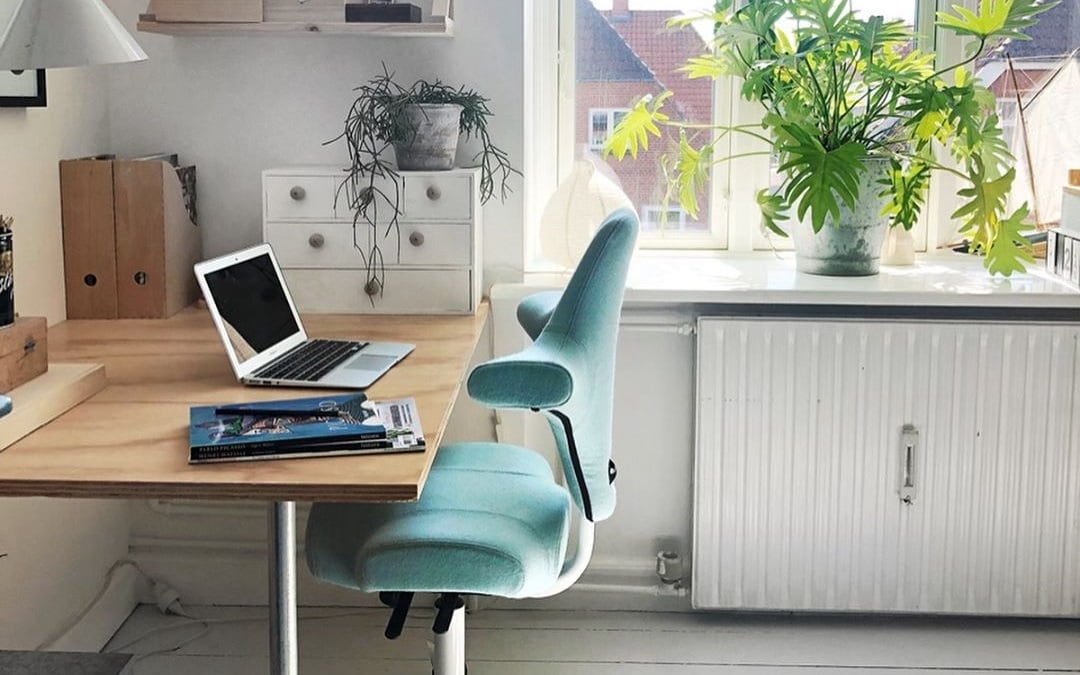
adeptness at using digital tools and the change in lifestyle found when working from home have fueled a global desire to remain at home when the pandemic is over. | Featured: HÅG Capisco
Gamechangers
To be successful in this shift, companies need to quickly re-evaluate their work culture. A hybrid model (offering the possibility to work remotely at least part-time) will be a necessary condition in order to compete with other employers in the post-pandemic work market. Large, international organizations are now starting to adopt a model where their employees work two days remotely and three at the office, or vice versa.
Allowing employees to work in different environments outside the office offers fruitful opportunities on both sides. For the employer, it’s a great tool for gaining knowledge, insights as well as new customers. Our world today is more volatile, uncertain, and complex than ever before. Tomorrow’s winners will be the ones that are able to thrive in that environment. And in order to sustain a climate of constantly coming up with new ways of thinking, expanding, and learning, we believe it is crucial to be open to interdisciplinary collaborations and cross-pollination.
We can already see how some big corporations are placing innovation teams in co-working places or think tanks to get new energy and sometimes to find new talent. Other companies open up parts of their office as a co-working space dedicated to partners, clients, or other interesting businesses whose expertise they could benefit from. Co-sharing set-ups like these have the potential to make the most boring office flourish with new ideas and projects. Further still, turning your office space into a platform “where things happen”, can be a powerful magnet for attracting young talent.
Redefining what work is
Judging from our own research and observations performed in the previous year, most people working from home tend to alternate their position between the home office desk (if there was room for one of those), the couch, the kitchen table, and sometimes even the bed, depending on the task and the circumstances at home. Most work carried out remotely in a home office situation can therefore be categorized as a form of activity-based work. We are convinced that this mindset will stick around as people return to the office.
Many seem to have grown fond of the upsides of their new work environment. Some even state that working from home supports their performance better than the office. In a study by Leesman, 83% of the study participants say that their home office enables them to work productively, while only 64% believe that the office does.
Therefore, a flexible way of working will continue to evolve and spread in the years to come. Business leaders who manage to use their employees' newfound, often positive, attitude towards the new ways of work as a catalyst for change have a lot to gain. Much has happened during the era of social distancing, and understanding the needs of your workforce will be more crucial than ever as the pandemic blows over. As an employer, you need to be attentive to how your employees prefer to work, what tools they need, and what office spaces are optimal for their wellbeing and performance. Whether business leaders listen to these facts and steer the change management process accordingly or not is likely to be the determining factor of which companies walk out of this crisis stronger than before and which will die with it.
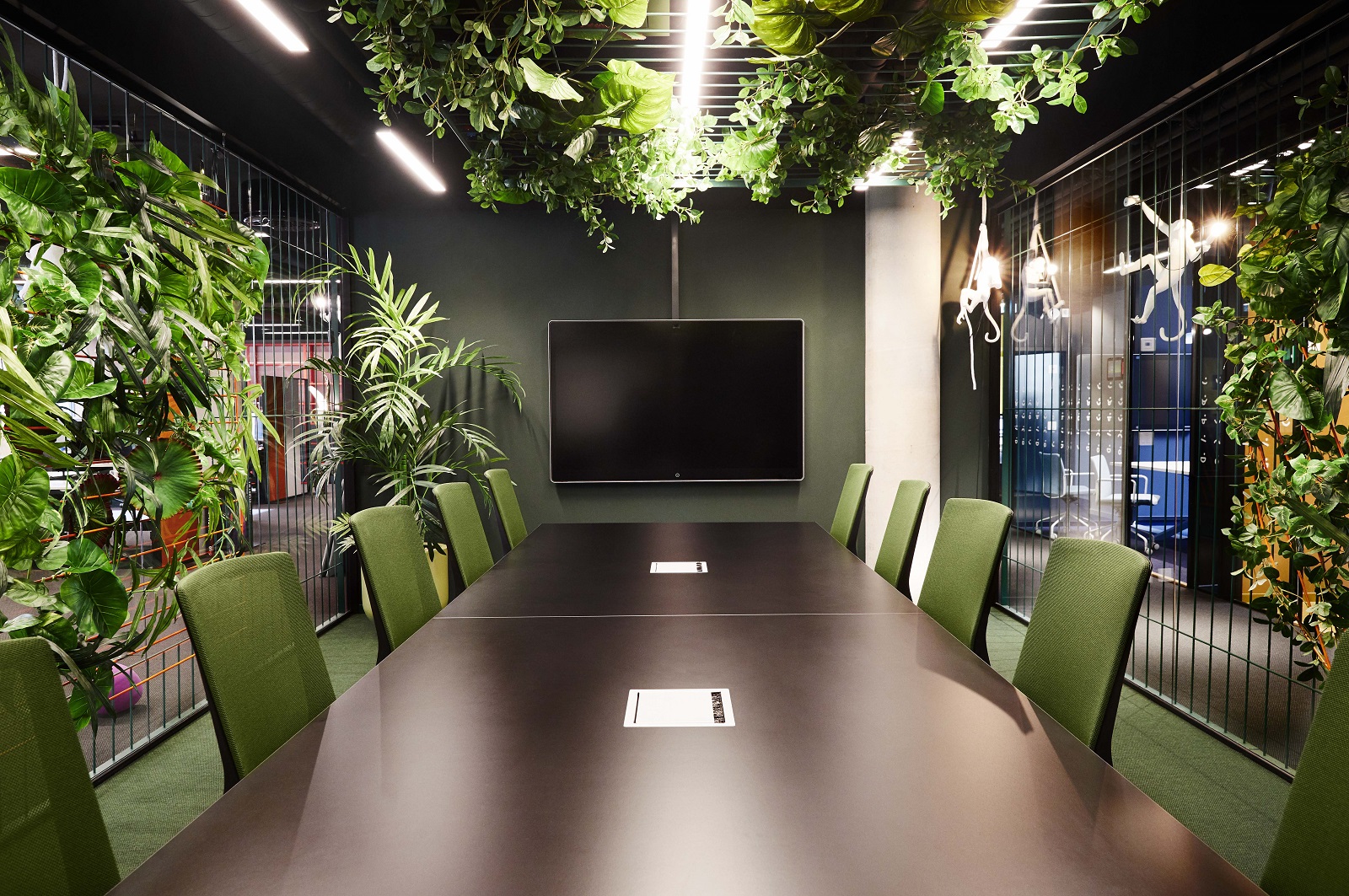
Collaborative spaces and areas for face-to-face meetings will take precedence over task-based personal desks. | Featured: HÅG Futu
Turn your work culture into a religion
In a couple of years, Millennials and Gen-Z will dominate the global workforce. Their behaviors and motivation drivers differ substantially from those of the previous generations, and naturally, the companies that manage to speak to the hearts of these people will become the strongest competitors on tomorrow’s market.
Money, fancy titles, or personal offices no longer count as main points of attraction. What does appeal to younger generations, according to the abundance of research on this topic, are things like meaningful work, inspiring leadership, and the social vibe at the office. The pursuit of professional happiness, a sense of purpose, and that you’re contributing to the greater good plays a more central part than ever before. And the hierarchical structures of past generations will ultimately break down as the next era of workers feel more comfortable bypassing power structures and contacting anyone directly, regardless of their title.
Millennials and younger employees prefer leadership as mentoring, allowing them to learn by themselves rather than receiving and following exact instructions like many of their older peers. Finally, those organizations that manage to build a community-like atmosphere where soft factors are prioritized will benefit greatly from it when seeking to attract young talent. A strong work culture that feels warm, fun and exciting together with well-established values and vision throughout the company is a good recipe for success. ”Work-ism”, a kind of belief system where work is likened to religious or spiritual contexts, is at the forefront these days. Within this ism, work becomes a focal point for identity, life purpose, and meaning, and it serves a particularly important cause in secularized countries.
Another central factor for tomorrow’s work culture is employee wellbeing. Petter Stordalen, a Norweigian hotel and property developer, as well as a billionaire businessman, was ahead of his time when he employed so-called “Directors of happiness” to spread joy in the organization. In the future, we are likely to see more and more jobs where the primary task is to spread joy, make others feel seen, and organize fun initiatives for socializing.
Read - What have we learnt after a year of working from home?
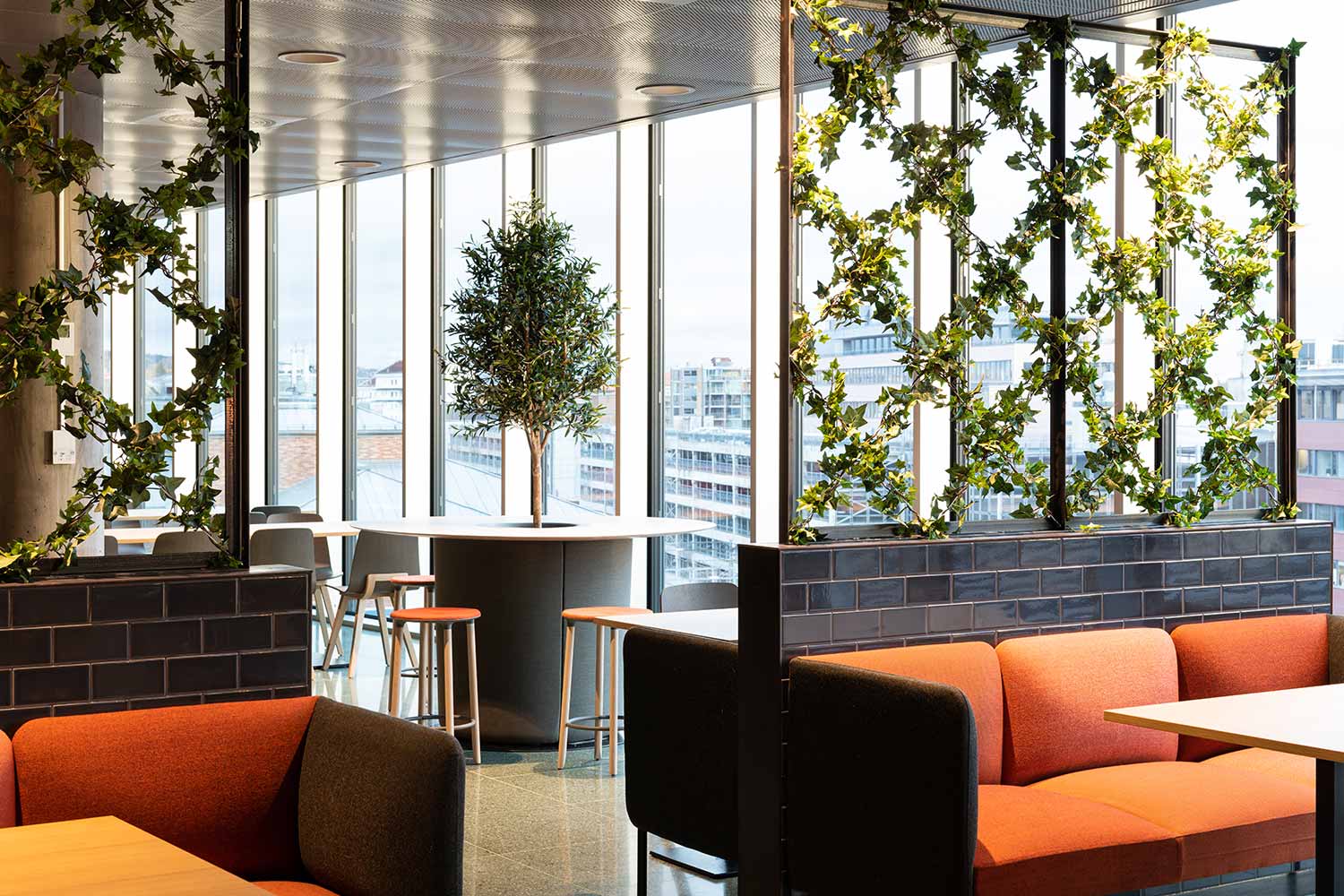
Featured: Offecct On-Point & Offecct Move On
Finally, let's meet!
The importance of meeting in person within the company from time to time should not be underestimated. Employees appreciate the possibility of spontaneous, informal chats, and being seen by management whilst working is good for motivation. These invisible factors matter for performance. Also, in order for business to blossom, long term, you need innovation. Innovation springs from employees who have a sense of belonging, trust and good interactions with each other. New creative ideas often occur in spontaneous situations, or when a few people in a room manage to reach a state of flow together. How many of those did you have in a scheduled zoom meeting? Our guess is that they are rarer.
As humans, elements like creativity and flow are a lot harder to foster through digital channels only. Naturally, connection, enthusiasm, and a shared focus are harder to bring about when somebody in the call is talking and sharing their screen while others are muted and perhaps even scrolling their social media on the side. It is simply harder to create an inspiring environment in these conditions.
Designing the future
Now is the perfect time to rethink the design of your organization’s physical space. Investigate in what way it affects work performance and wellbeing. Is it possible to enhance efficiency, creativity, and wellbeing as the co-workers return? It might also be a good idea to use this time to consider the corporate real estate footprint of your company, whether that involves downsizing or redistributing the office space.
Though adapting the physical office to the post-pandemic work climate is an important step in the journey, the makeover should not be viewed as a goal in itself. Rather, it serves as a tool to boost a thriving culture and business. An attractive workspace is one of the best beacons for talent and a great way to nudge desired behaviors within the organization. The good reputation and the ripple effects it has on your employer branding becomes a bonus.
![RH_Mereo_models_2[ppt]](https://focus.flokk.com/hubfs/social-suggested-images/RH_Mereo_models_2%5Bppt%5D.jpg)
Workspace models may feature more hot-desk style seating, with furniture designed for multi-users. | Featured: RH Mereo
However, to get a successful result it is paramount to first do your homework and find out what your co-workers do all day, and define how the workspace can best support them from that point of view.
With a big fraction of them carrying out work from elsewhere, the office furniture might have other needs to fill than before. Perhaps there is a bigger demand for meeting space and less for personal desks? When most office chairs are meant to be shared, we are likely to see more of the standardised “hot chairs” and less of the perfect ergonomic office chair with a bunch of features that nobody knows how to adjust.
There are psychological factors to consider here as well. The pandemic made us painfully aware of how vulnerable we are in crowded spaces, and sharing furniture might make people worried or even scared of getting infected even after Corona. We now see new “medically safe” design solutions meant to decrease the infection risks popping up every day; touch-free alternatives with motion sensors, updated HVAC systems with Ionizer filters, and high tech UV cleaning. These will be supplemented with antibacterial and self-cleaning materials on all types of surfaces, and of course more frequent cleaning. In addition to that, we will probably see architectural floor plans allowing the organization to temporarily adapt to appropriate social distancing regulations if needed again in the future. Also, many companies invested in personal laptops and tablets for all employees last year. This gives them the opportunity to stay home and work when they normally would come to the office. This alone will greatly reduce the spread of infection.
Surely every office makeover has to be customized to the enterprise’s (and its people’s) unique needs, but the trend of moving the focus from ergonomy towards providing an overall healthy and sustainable office environment with high levels of flexibility is very clear. There is a lot to be gained simply by ensuring a high quality of air, sound, and light in the whole building. The winners of tomorrow will be the companies that succeed in attracting and keeping the best people.
As we now approach the end of the pandemic, we enter a new era of work. The six feet office will be no more, and business will never be business as usual again. Just as in nature, or the world at large if you will, the survivors will be those that are able and willing to adapt, realizing that the only way back is forward.
About Superlab
Superlab is an experimental design laboratory with the purpose of changing the future. Their strength is that they combine research studies with innovation processes where the outcome becomes something out of the ordinary.
This might also interest you
Inspiring great work: How Mesh Community and Flokk are redefining the modern workspace
We explore how Mesh Community redefines workspaces—fostering creativity,...
Flokk’s design competition returns to Gothenburg
The second edition of our HÅG Capisco design competition sees four more...
Elevate your video calls with free high-quality background images
Download our curated collection of high-quality background images, perfect...